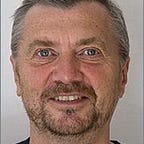Explainer: resource availability as a funnel
The funnel concept, introduced by Karl-Henrik Robert Founder of the Swedish Natural Step, explains how increasing pressure on resources reduces the options of future generations to maintain a standard of living. Stress like that on populations radically increases conflict and undermines peaceful societies. In the diagram below, the width of the funnel represents the opportunities to continue society’s per capita resource usage. The depth of the funnel represents time.
As economic growth continues, resource depletion of essential minerals increases as does essential biological material like soils. With the growing world population demanding higher and higher standards, this depletion accelerates. The consequence is that for every generation, the available future stock of resources gets smaller, and much smaller per capita. Distribution has become uneven too, where much of the wealth in the world is owned by a small percentage and as much as one seventh suffer from hunger.
As time goes on, resources get more expensive and pollution increases, putting pressure on health. The opportunity to maintain or raise standards of living diminishes rapidly. Indeed, the ability for businesses to profit from their operations diminishes as costs eat up available income. Falling profits take wages with them. In an unequal world, this quickly gives rise to insecurity of the basics: housing, food, and social inclusion for the many. This in turn undermines peace.
A major shift in the way we organize society is needed — from our economic system to our food provision system and the way we distribute resources. We need to find a way to regenerate the amount of resources available to each person and to live well on what we have. Without this, there can be no sound economy.
The regenerative approach, depicted in the diagram above, entails increasing the resources available per person and distributing them so everyone has enough. The vision, promoted by Karl-Henrik Robert and many others, is one where the counter-sustainable trajectory we are currently on is halted. Resource availability per capita (mean, median and mode) stops falling and starts to increase. And suffering ends.
A re-design of the economic system
Nothing short of a transformation of our economy will do. We need our best minds to design ways the monetary system can be changed to stimulate and support this turn-around. In terms of handling physical resources like minerals and biomass several promising ideas have surfaced.
So mineral resources can be recycled indefinitely
One proposal is for minerals to be recycled constantly once mined. Today, many products once scrapped are scrapped in a way that makes the minerals in them unrecoverable. New thinking in terms of product design and waste management — the circular economy — means that components and products all have longer life cycles and that minerals are recycled into new products.
And biomass constantly returns to the eco-system
Much of our biological waste is not returned to the ecosystem in a way that creates, for example, more soil. Instead it is burnt or dumped in ways that it does not return to circulate naturally in our eco-systems. New approaches would be regenerative of soil and ecosystems generally, encouraging tree growth and increase in biomass. This in turn would remove carbon from the atmosphere and increase the capacity of the Earth to resist global warming.
Ensure equitable distribution
Concepts like Universal Basic Income (UBI) and Universal Basic Services (UBS) offer new thinking. UBI sets out a minimum amount of money each citizen gets per month — to cover basic needs, and UBS proposes to offer these services without payment. When working as intended, both provide the essential “floor” — security of the basics and freedom from suffering- of the House of Peace proposed by Invest in Peace.
Lays the foundation investment in Peace
The funnel concept illustrates how continuing along our present trajectory will undermine the conditions for peace. New approaches — especially investments, will be needed to create societal systems that provide the basics for all whilst regenerating soil and retaining minerals in circulation in perpetuity. We, mankind, brought humanity to this point so it is perfectly possible that we can remedy it to create the physical conditions for the realization of our shared project — peace.
Read more
- The funnel as presented by Karl-Henrik Robert
- Rise up economics — video from Robert Reich
- Doughnut economics -from Kate Rayworth
- Environmental Fiscal Reform — EFR
- Underlying reason for the long depression by Marxist economist Michael Roberts
- Universal Basic Income
- Universal Basic Services
- George Monbiot on the need for a new restorative political story (You Tube)
- Invest in Peace
This article was first published on the Invest in Peace Blog
